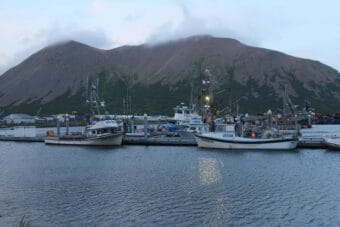
Through two years of pandemic, Alaska’s economists have kept an especially close eye on state labor data for things like unemployment and job openings.
As job numbers have rebounded, though, more attention is being paid to “labor churn” — that’s a description of not just job openings, but also things like how many workers are actually in those jobs and how many are quitting or retiring.
And a somewhat new-to-Alaska tool helping look at churn is called JOLTS: the Job Openings and Labor Turnover Survey, as written about recently by Department of Labor economist Neal Fried. Fried says JOLTS can offer economists and public policymakers more, and much-needed, information.
Listen here:
The following transcript has been lightly edited for clarity.
Neal Fried: I’ll tell you, right now, we can use all the information we can get, because it is the strangest, most chaotic, mysterious, and often seemingly contradictory trends that are going on in the labor market all at the same time. So any information that helps us try to understand what’s happening right now is helpful.
Casey Grove: Tell me more about the JOLT survey results that you saw in that report you made.
Neal Fried: We’ve always known that Alaska has a high churn labor market. People are coming in and out of our labor market. We have the most seasonal economy and labor market in the country. So it’s always kind of churning out there. And then we look at this data, and we have the second highest hiring rates in the country, when we looked at the August data. At that time, the job openings rate was the highest in the country, the separations rate was second, the quit rate was fourth. So this does reinforce the fact that Alaska has a job market that churns a lot. And in a sense, that’s always been sort of an advantage for people who are looking for work, because even if we don’t see job growth, because there’s turnover here — more here than most places — it does provide opportunities for people looking for jobs. Now, it may create headaches, obviously, for employers, but it’s not surprising that we’re above average in most of those measures.
Casey Grove: So, is that a good thing or not?
Neal Fried: I think it depends on who you are. They did a survey, this is on the national level of people who quit their jobs, and then went to find another job. And in most cases, most of those folks saw an increase in their wages. You know, so for those folks who are looking for a job, or looking to change jobs, or looking for a new career, this is an incredible opportunity, actually. For employers, of course, it’s a huge challenge. So it really depends on what side of the equation you’re looking at. And what, for me, the most interesting thing is: How long is this going to last? And I don’t even dare try to forecast that. But when we think about — it’s hard to think about that right now, with the subzero weather we’re experiencing — but summer is not that far off. And, you know, beginning in March our labor market begins to kind of thaw out. Right now we’re losing jobs. We always are in November, December, January, February, but they’ll start growing in March and April, May. What will happen? And when that occurs, and I know that’s a big concern for a lot of employers that are tied up in the seasonal sector of our economy.
Casey Grove: All this uncertainty, is that good for economists? I mean, it seems like your services would be in high demand. We need you more than ever, Neal.
Neal Fried: Oh, yeah, that’s a good question. You know, I hope so. But I don’t know if that’s really true or not. I mean, from an economist’s standpoint, and an old labor economist’s standpoint in particular, I mean, it is fascinating. This is not something that I think any one person would have ever thought was a possible scenario. Now, we have had labor shortages before. I mean, that’s not new. But for this reason, being in basically a recessionary environment — an environment where there are fewer jobs today than there were a couple of years ago, but still having labor shortages. And in any past recession, job seekers were having a tough time finding work, the number of quits would decline, because normally you’re not going to quit your job if you don’t think there’s another one out there. And in that environment, that’s the way it used to be But this, we’ve seen this change occur. That’s what’s so phenomenally interesting, and was totally unpredictable, I think.



